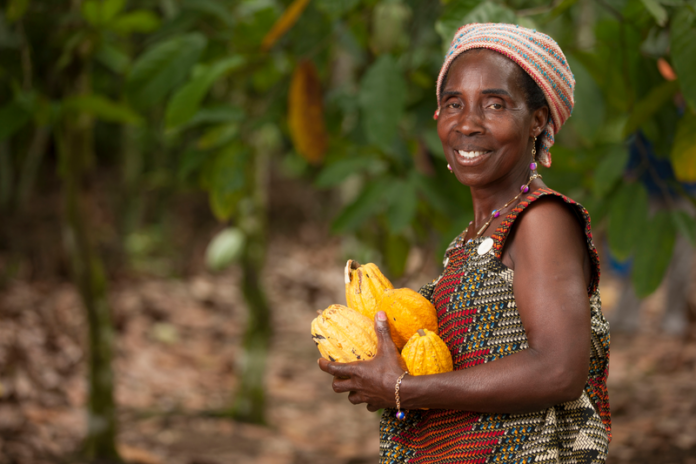Multinational food giants Nestlé and Mars have announced plans to invest in regenerative and responsibly sourced commodities including coffee and cocoa as part of their plans to become more sustainable. The secret to success for both companies? Smallholder farms.
Nestlé is earmarking more than $1 billion USD through its the Nescafé Plan 2030 to help make its coffee supply chain more sustainable, the company announced earlier this week. The goal is 100 percent responsibly sourced coffee by 2025, with 50 percent coming from regenerative agricultural methods by 2030.
Coffee is a crop already feeling the impact of climate change. A study published earlier this year in the scientific journal Plos One found that coffee plants will become “drastically” less suitable for cultivating by 2050 as a result of climate change. Warming temperatures make it more difficult to grow coffee, particularly arabica, the most common coffee plant.
“The main coffee producing countries investigated (Brazil, Vietnam, Indonesia, Colombia) are all seriously affected by climate change with a strong decline in suitable areas … and an increase in unsuitable areas by 2050,” reads the report.
Nestlé says its efforts may help protect coffee plants and the planet. It’s focusing the funding on regenerative agriculture, responsibly sourced coffee, supporting farmers, and reducing emissions.
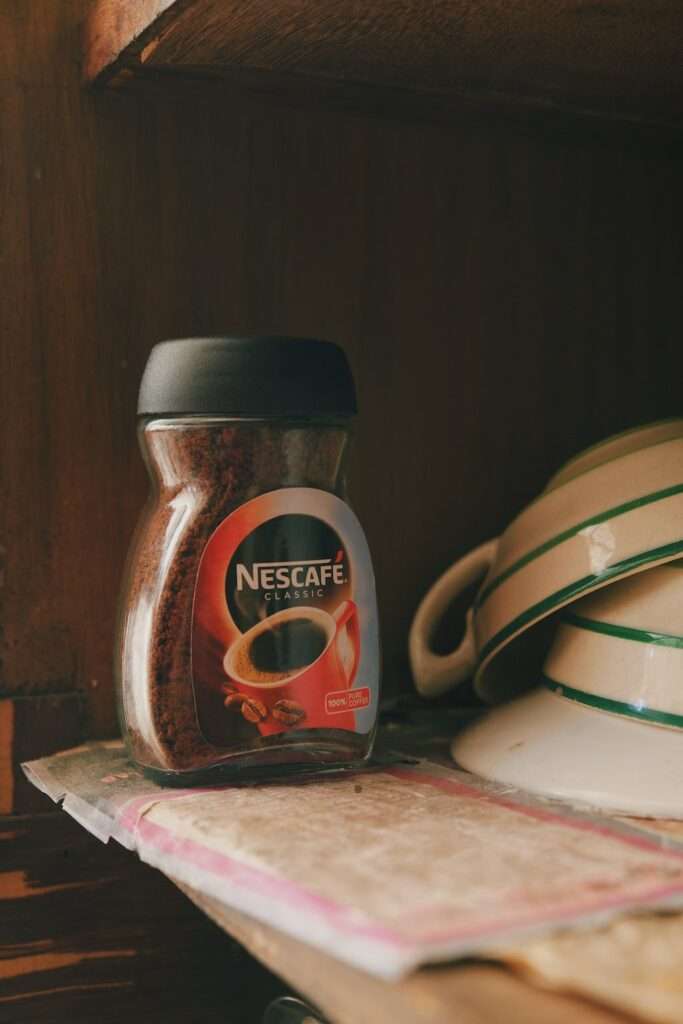
“Climate change is putting coffee-growing areas under pressure. Building on 10 years’ experience of the Nescafé Plan, we’re accelerating our work to help tackle climate change and address social and economic challenges in the Nescafé value chains,” David Rennie, Head of Nestlé Coffee Brands, said in a statement.
“As the world’s leading coffee brand, Nescafé aims to have a real impact on coffee farming globally,” said Philipp Navratil, Head of Nestlé’s Coffee Strategic Business Unit. “We want coffee farmers to thrive as much as we want coffee to have a positive impact on the environment. Our actions can help drive change throughout the coffee industry.”
Regenerative agriculture
Transitioning farmers to regenerative agriculture helps protects the soil through planting cover crops, using organic fertilizer, agroforestry and intercropping, among other techniques, so that it can better capture and store carbon. Nestlé says it will focus on Brazil, Vietnam, Mexico, Colombia, Côte d’Ivoire, Indonesia, and Honduras, where most of its coffee comes from. Farmers in the program will be trained and offered technical assistance.
The food giant will pilot a financial support program for farmers in Mexico, Côte d’Ivoire, Indonesia, and Honduras. It will test new methods for financial support for farmers including conditional cash incentives for regenerative agriculture, increased access to credit, and income protection. It will also focus on supporting biodiversity, reducing deforestation, and planting 20 million trees.
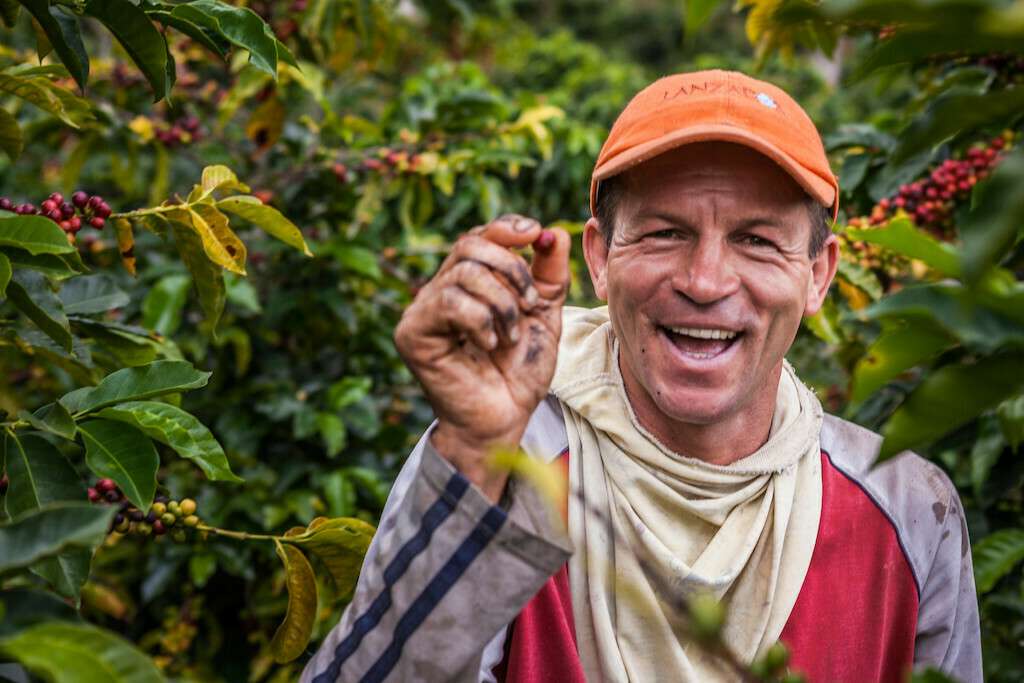
In its Cocoa for Generation report released last month, Mars Wrigley said it’s working toward a fully sustainable supply chain for its cocoa, with 100 percent of cocoa being responsibly sourced and traceable from farm to first point of purchase.
“Too many cocoa farmers continue to face a series of challenges from poverty to child labor and deforestation,” Andrew Clarke, Mars Wrigley Global President, said in a statement. “The impacts of climate change and global crises are exacerbating existing vulnerabilities across cocoa farming communities and beyond.”
According to Clarke, it’s the reason why the company is aiming to accelerate the transformation of the cocoa supply chain so that it benefits both people and the planet. “To get there, we’re working to protect children, preserve forests, and improve farmer incomes,” Clarke said. “We are challenging ourselves and the entire sector to evolve and adopt approaches that deliver greater impact where it matters most—in cocoa farming communities across Latin America, West Africa, and Southeast Asia.”
The cocoa industry is historically one of the biggest offenders when it comes to labor issues, affecting both women and children. Mars says a collaboration with CARE, the Women for Change program has supported more than 77,000 members—including nearly 60,000 women—in Côte d’Ivoire and Ghana cocoa communities. Loans totaling more than $3.7 million and more than $7.4 million in savings have helped to fund new farming methods, support household expenses including access to education and health care.
“We can’t do this work alone,” said Amber Johnson, Vice-President Mars Wrigley Cocoa. “The shifts and the scale to reach sustained, demonstrable improvements for cocoa farming families and their communities requires thinking and collaborating in new ways.”
Supporting smallholder farms
According to Deborah Osei-Mensah, registered cocoa farmer livelihood development officer of Ghana’s Asunafo North Farmers Union, and leader of the union’s Monitoring and Evaluation team, cocoa is the mainstay of Ghana’s formal economy. It is the third export from Ghana and employs about 800,000 farm families, including her own.
“Ghana also plays an important role on the international cocoa market as it is the second largest producer of cocoa beans in the world after Ivory Coast, and represents about 20 percent of global production (International Cocoa Organizations Annual Reports),” Osei-Mensah told Ethos via email.
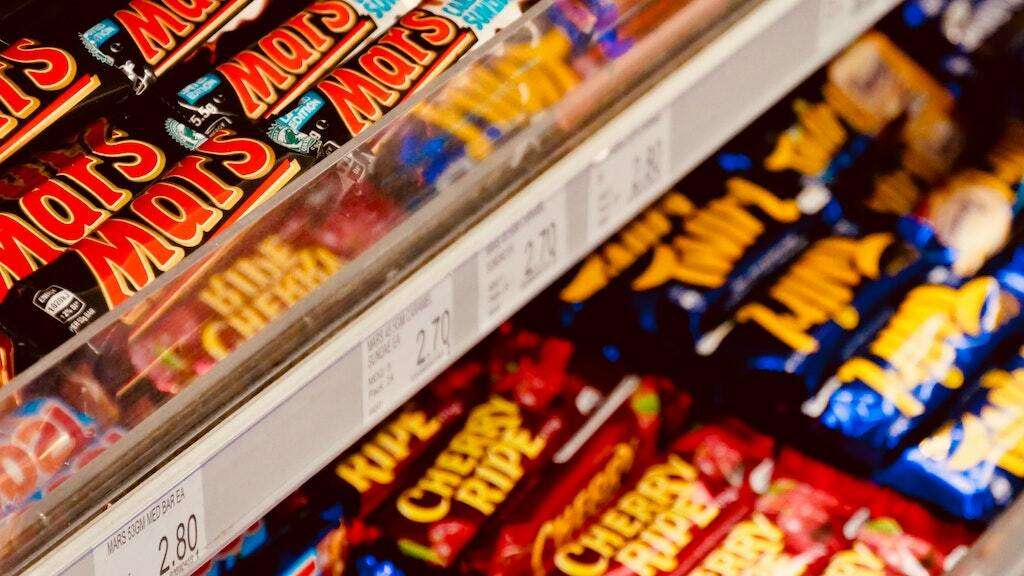
“As in most cocoa growing countries, Ghanaian cocoa is grown by smallholder farmers—those with less than five acres of land and an average yield of just 1300-1760 lbs per year,” says Osei-Mensah. “The sector employs about 2 million people who engage in farming, trade, transportation and processing of cocoa.”
But she says in spite of the significant employment opportunities the sector provides, the industry faces a number of challenges, which could, in the long term, reduce the annual tonnage of product and threaten the sustainability of the industry if not proactively addressed. “A great proportion of farmers today are older, meaning if strategies are not put in place to increase youth involvement in the sector, sustainability will be at risk,” Osei-Mensah says.
Mars launched two programs that will support 14,000 smallholder farmers in Côte d’Ivoire and Indonesia to start, including those certified by Fairtrade International. The goal is a sustainable living income by 2030.
Deforestation
Deforestation is also a critical issue as cocoa is largely grown in the forest zone, says Osei-Mensah. Recent deforestation across the cocoa-growing regions is further exposing farms to negative impacts of climate change. “The desire of farmers to increase their land size with the aim of increasing productivity and income is leading farmers to encroach into the reserve area due to unavailability of fertile farmland,” she says.
“For as much as cocoa farmers in Ghana work hard to produce, they enjoy little to nothing of the profit that comes out of the cocoa value chain at the end.
-Deborah Osei-Mensah
Like Nestlé, Mars is also working to combat deforestation and protect biodiversity. Last year, it distributed nearly 2 million non-cocoa trees to increase shade and promote biodiversity. Deforestation- and conversion-free cocoa will reduce Mars’ greenhouse gas footprint by 20 percent, the company said. It’s aiming for a 27 percent reduction across its entire value chain by 2025, and net-zero emissions by 2050.
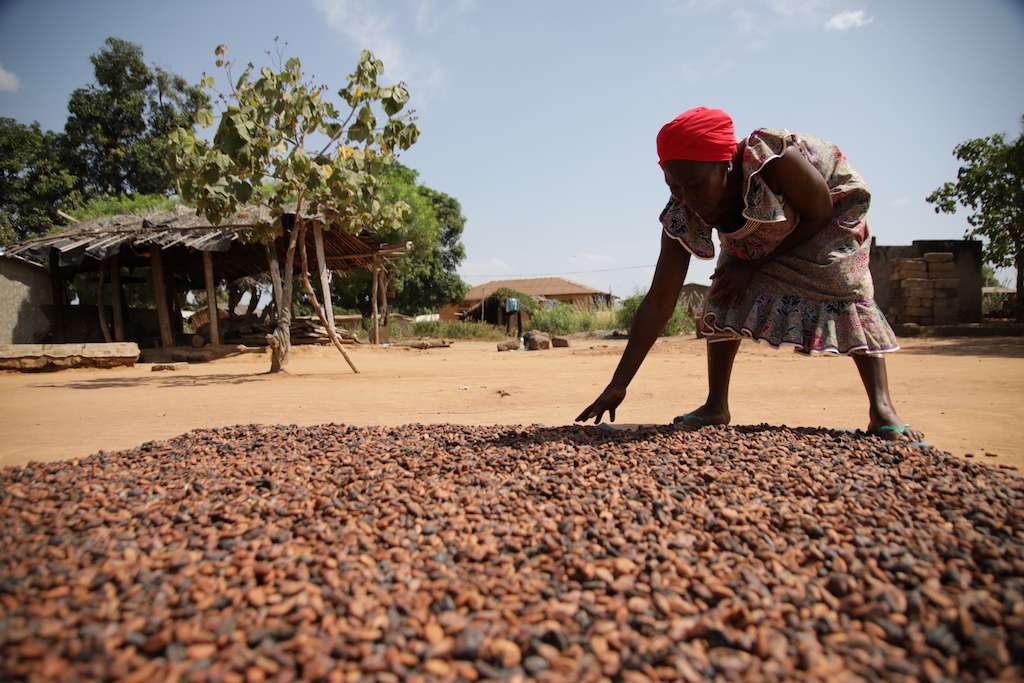
According to Osei-Mensah, beyond the government’s efforts in the supply chain, the Fairtrade organization has been advocating and supporting farmers to adapt best practices, “though there is still the need to intensify education and support among farmers to have knowledge to grow more on the same piece of land, and practice agroforestry that allows both farmers and forest to thrive,” she says.
“For as much as cocoa farmers in Ghana work hard to produce, they enjoy little to nothing of the profit that comes out of the cocoa value chain at the end. It is, therefore, important that chocolate manufacturing companies pay fair and realistic prices to farmers to cover the cost of production as well as support a decent livelihood: in other words, a living income.”
Traceability
For its part, Mars says traceability is key to ensuring fair wages. It’s working to map farm plots, tracing the perimeter of the farm instead of a singular GPS point. This makes traceability more feasible from farm to first purchase point. By the end of last year, nearly 80 percent of its farm plots had been mapped, Mars said.
According to Jon Walker, Senior Cocoa Advisor at Fairtrade International, a recent study found many farmers in Africa, Asia, and South America are struggling to earn a living income due to inflation, covid, and climate change. According to the World Economic Forum, cocoa farmers in Ghana make around $1 a day.
A 2021 study published by Fairtrade International found that in Côte d’Ivoire the average annual Ivorian cocoa farmer household income grew from $2,670 in 2016/17 to $4,937 in 2020/21—an increase of 85 percent, which was driven in part by increased revenue from cocoa sales and diversification through in-kind and off-farm incomes.
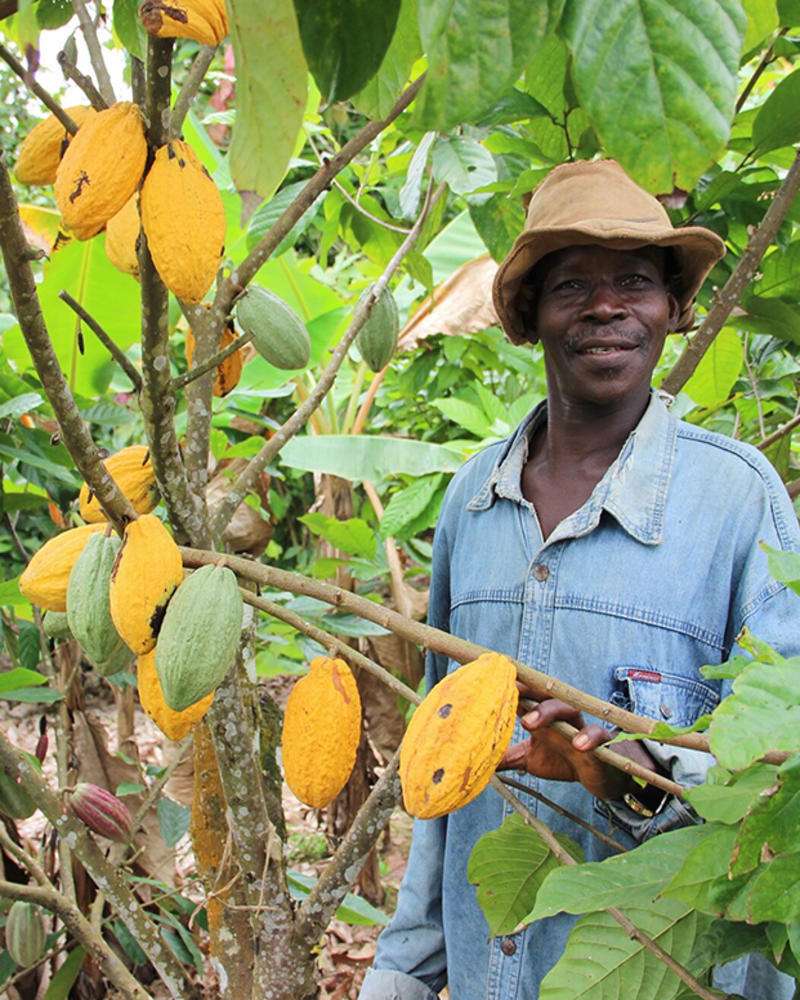
“In addition, a significant number of Ivorian cocoa farmers have moved out of extreme poverty with 61 percent of the farmers’ households in the current study living above the extreme poverty line, as compared to 42 percent based on a report published in 2018,” Walker told Ethos.
“However, since the study, given the rising costs of production, rising cost of living and stagnant price of cocoa, and bearing in mind what we are hearing from farmers now we will likely find some of these gains are reversed when we collect the next set of data.”
Living Income Differential
Walker says the Ghanian government is working to address the income issue, though he says government attempts alone will not be enough for many farmers to earn a living income.
“The government implemented a Living Income Differential (LID) in 2020, providing an extra $400 per tonne of cocoa produced on top of the market price for all cocoa sold from Ghana and was designed to increase cocoa farmers’ income. However, according to the Ghanian regulator, within its first two years of implementation, a combination of persistently low cocoa prices on the international market and erosion of a separate premium received for quality, called the country differential, undermined the effect of the LID.”
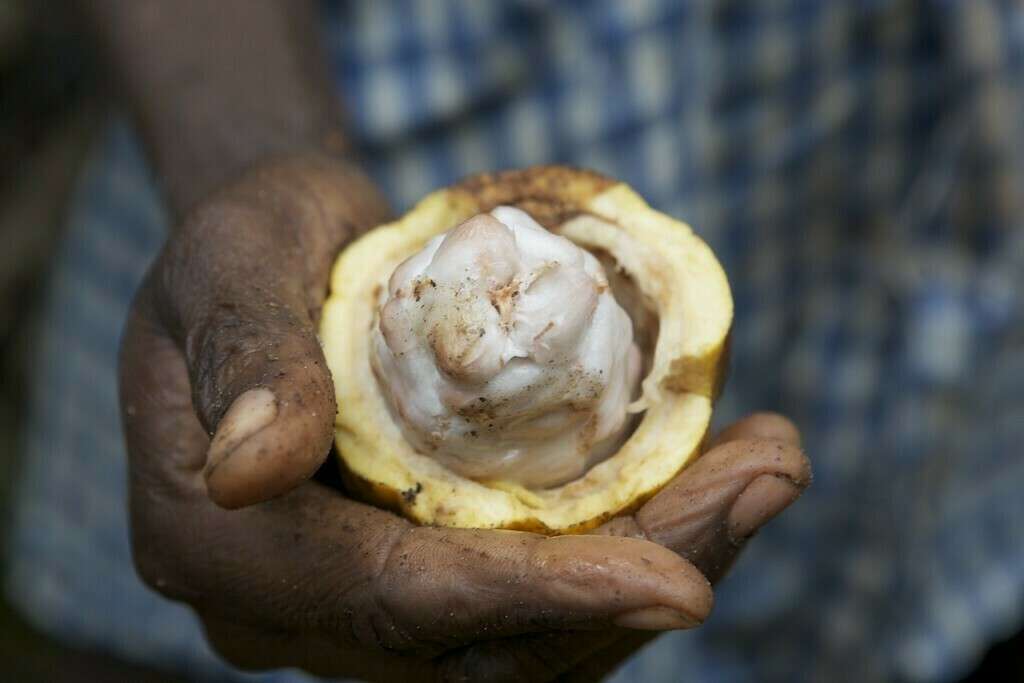
Walker says Fairtrade International supports the efforts of the governments to raise the income for all farmers. “Cocoa sold on Fairtrade terms has a mandatory additional Premium paid to cooperatives on top of the market price, which the cooperatives then decide at their General Assembly how to spend. Fairtrade believes that to see progress we must come together as businesses, consumers and governments to make sure farmers earn a living income.”
Financial impacts
There are two main financial impacts for Ghanaian cocoa farmers when they sell on Fairtrade terms, says Walker. First, the mandatory Fairtrade Minimum Price, which is currently $2,400 per ton at the point of export, (also known as Free on Board), and the mandatory Fairtrade Premium ($240 per ton), which Walker says is a required payment that is made to the farmer cooperatives and is spent democratically on initiatives that are meaningful to members.
“In some instances this might be investing in farming materials, but it can also be used for community projects like building schools or improving infrastructure. In addition to these mandatory payments, Fairtrade has designed a voluntary concept for brands called Living Income Reference Price as part of the Fairtrade Living Income Strategy,” Walker explains.
We remain constructively discontent—relentless in our work to create a modern, inclusive, and sustainable cocoa supply chain.
-Amber Johnson, Vice-President Mars Wrigley Cocoa
“This is a further financial intervention paid on top of the Minimum Price and Premium to farmers, which when combined with other aspects of Fairtrade’s Living Income strategy such as increasing farm efficiency and productivity, securing long term contracts and increasing income diversification would close the income gap,” he says, citing companies including Ben & Jerry’s and Tony’s Chocolonely as partners in Fairtrade’s Living Income Strategy.
In 2020, more than 2,500 brands were licensed by Fairtrade International, selling more than 37,000 products made with Fairtrade certified ingredients in 131 countries.
“As more consumers demand that farmers get a fair deal – 73 percent of Fairtrade shoppers are willing to pay more for a product to ensure producers are paid a fair price—we anticipate businesses will supply ethically sourced ingredients to meet consumer demands, and will invest in programs that work to get farmers a fairer deal,” Walker says.
“We are working to transform the cocoa ecosystem, and while we’ve made important progress to-date, we’re not done yet,” Johnson says of Mars’ progress.
“Through our programs and in collaboration with key global partners, including industry peers, governments, development agencies, research institutions and civil society organizations, we’re sharing what works and what we learn along the way,” she says.
“We remain constructively discontent—relentless in our work to create a modern, inclusive, and sustainable cocoa supply chain. One where the environment is protected, human rights are respected, and everyone has the opportunity to thrive.”
Supporting Fairtrade
Walker says ultimately, it is more important to focus on how much cocoa is sold on Fairtrade terms “as it is only when cocoa is sold as Fairtrade that the financial benefits for farmers are achieved.”
He says in 2021, 18,766 tons of Ghanian cocoa was sold as Fairtrade, which is less than three percent of total Ghanian production of the 685,000 tons estimated for the 2021/22 season. “Globally, from all countries of production, approximately 250,000 tons was sold on Fairtrade terms.”
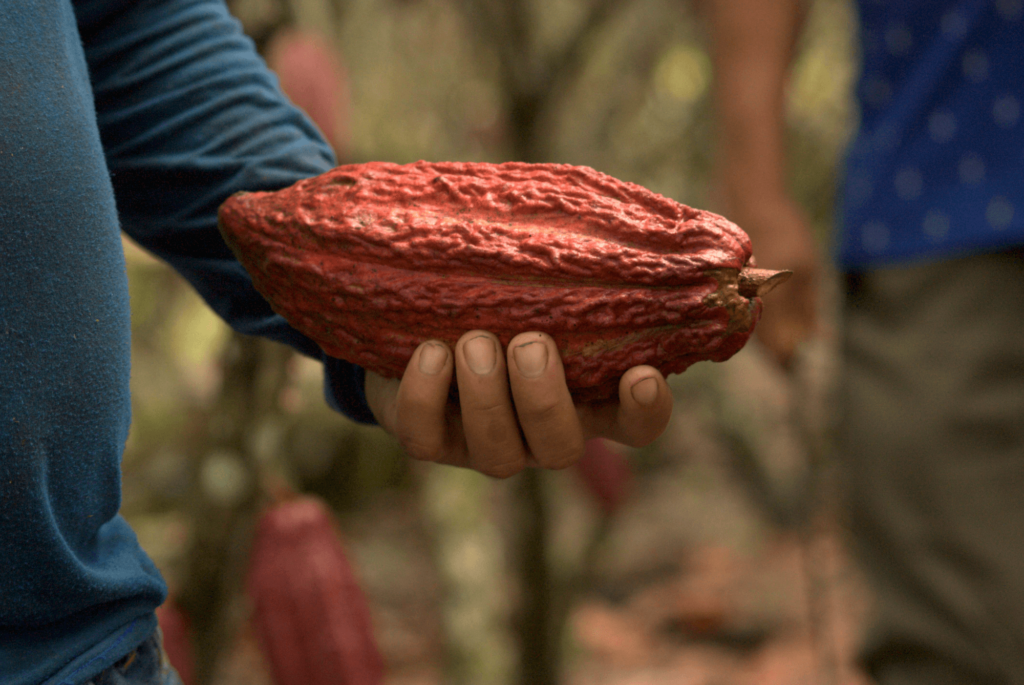
For every farmer to improve their livelihood, it is important to have a diversified source of income, says Osei-Mensah. “The rising cost of production, as well as rising cost of living, provides a competitive ground for farmers to invest in other sources of income.”
She says if consumers purchase more products from companies that subscribe to sustainability certification, income for cocoa farmers will increase.
“For example, if consumers buy more Fairtrade certified products, the demand for such products will expand the market base for Fairtrade certified producers, thus ultimately increasing the income of farmers,” Osei-Mensah says.
“Consumers have the power to create change by choosing products that are Fairtrade certified and ethically sourced.”

